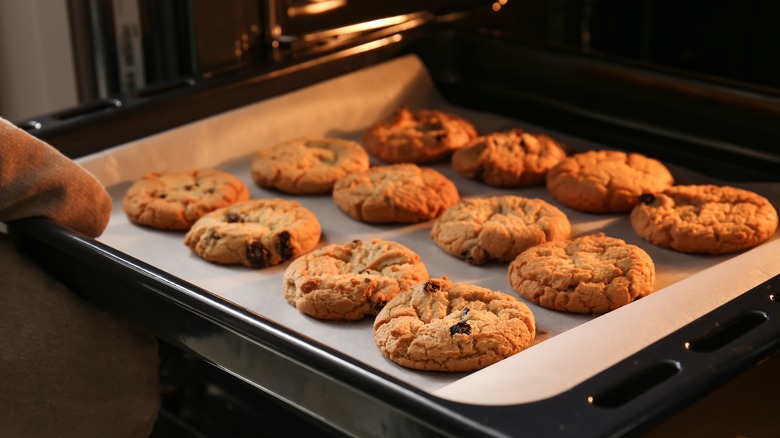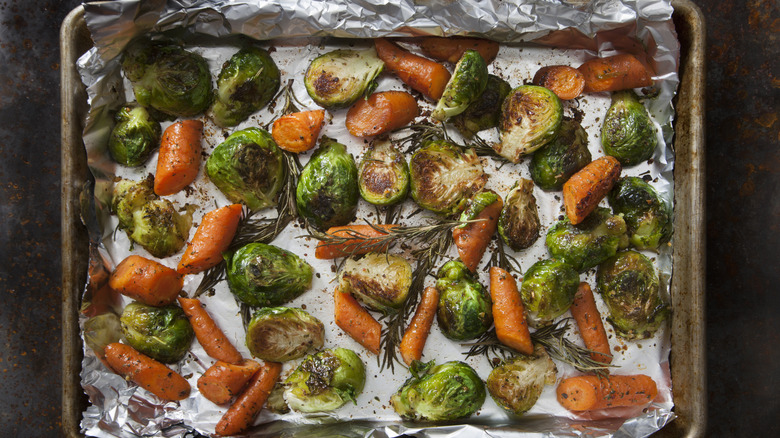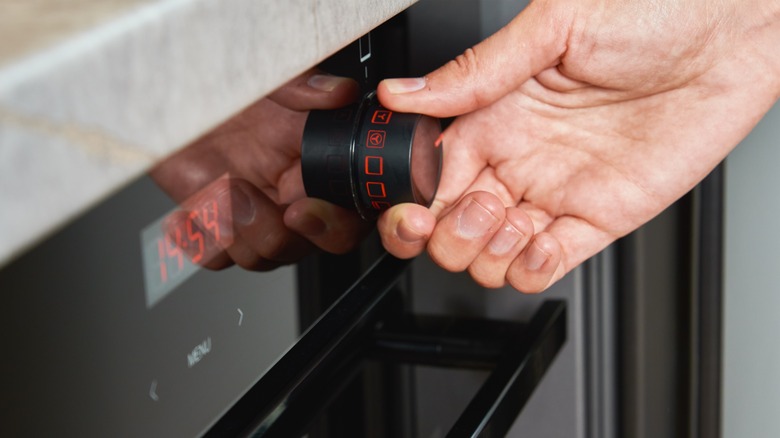The Difference Between Roasting And Baking In An Oven
Roasting and baking both involve cooking food in a hot oven, but they're not the same cooking method. However, there are certainly blurry areas between the two, and some people would argue that the differences are purely semantics. But, they are wrong.
One of the main differences is that roasting tends to involve cooking food at a higher temperature, while baking utilizes lower ones. For example, baking often takes place at 350 degrees Fahrenheit, particularly for sweets like cookies and cakes, while roasting tends to go over the 400-degree Fahrenheit mark. But, this is just a general tendency, not an absolute difference that's true across the board: For example, the right temperature for baking bread can also be well over 400 degrees Fahrenheit. Similarly, some meats might be slow-roasted at lower temperatures.
Beyond temperature, the difference is also about what you want out of your food: If you're roasting, the goal is to get a nice crisp exterior to your food (think of a crispy roasted chicken skin), with some nice brown spots and caramelization. Baking, on the other hand, is more precise. Sure, a baked item might get crispier and browner, but the goal is to cook it very evenly all over.
What you roast versus what you bake
The difference between roasting and baking is not always about how you cook something (since both involve putting items in the oven at a specific temperature) — it's more about what you're cooking. Roasting tends to be something you do to an individual food, like a potato, a carrot, or a large piece of meat. Of course, nothing is stopping you from roasting a bunch of things together in one pan, but the various vegetables and meats you might use still stand on their own. Baking tends to involve an array of ingredients mixed into one dish — and some would argue that it involves transforming those ingredients in the process (for example, the way liquid cake batter becomes a solid).
Another difference between what gets baked and roasted is that roasting tends to be associated with savory dishes — meats and vegetables, in particular. While it's possible to roast fruit, there just aren't that many big-name roasted sweet dishes. On the other hand, baking may be seen more for sweet treats, but this isn't quite so absolute: Dishes like lasagna and casserole are baked, but they also fit the definition in that the combination of their ingredients is brought together during the baking process.
What about my oven's bake and roast settings?
Some more modern ovens may have separate settings for baking and roasting (as well as broiling, which directs heat down from the top of the oven to brown the top of a dish) – these may be labeled as convection bake and convection roast (convection ovens are the type that move air around with a fan, compared to conventional ovens, which don't). There's one key difference to know about these options: The roast option will tend to use more fan power, circulating air around the oven more while your food cooks. The hot air moving around helps to brown, crisp up, and caramelize your roasted meats and veggies.
But, if you're trying to bake something like cookies or cake, that moving air will dry it out — which is why you might want to opt for the bake option, which should tone down the use of the fan. But, be warned: There's no cross-industry agreement on what these settings mean, so if your oven has them, double-check its manual to be sure. Plus, when it comes down to it, temperature matters just as much, and whichever option you use, you'll have to make sure you set it to the right level.


